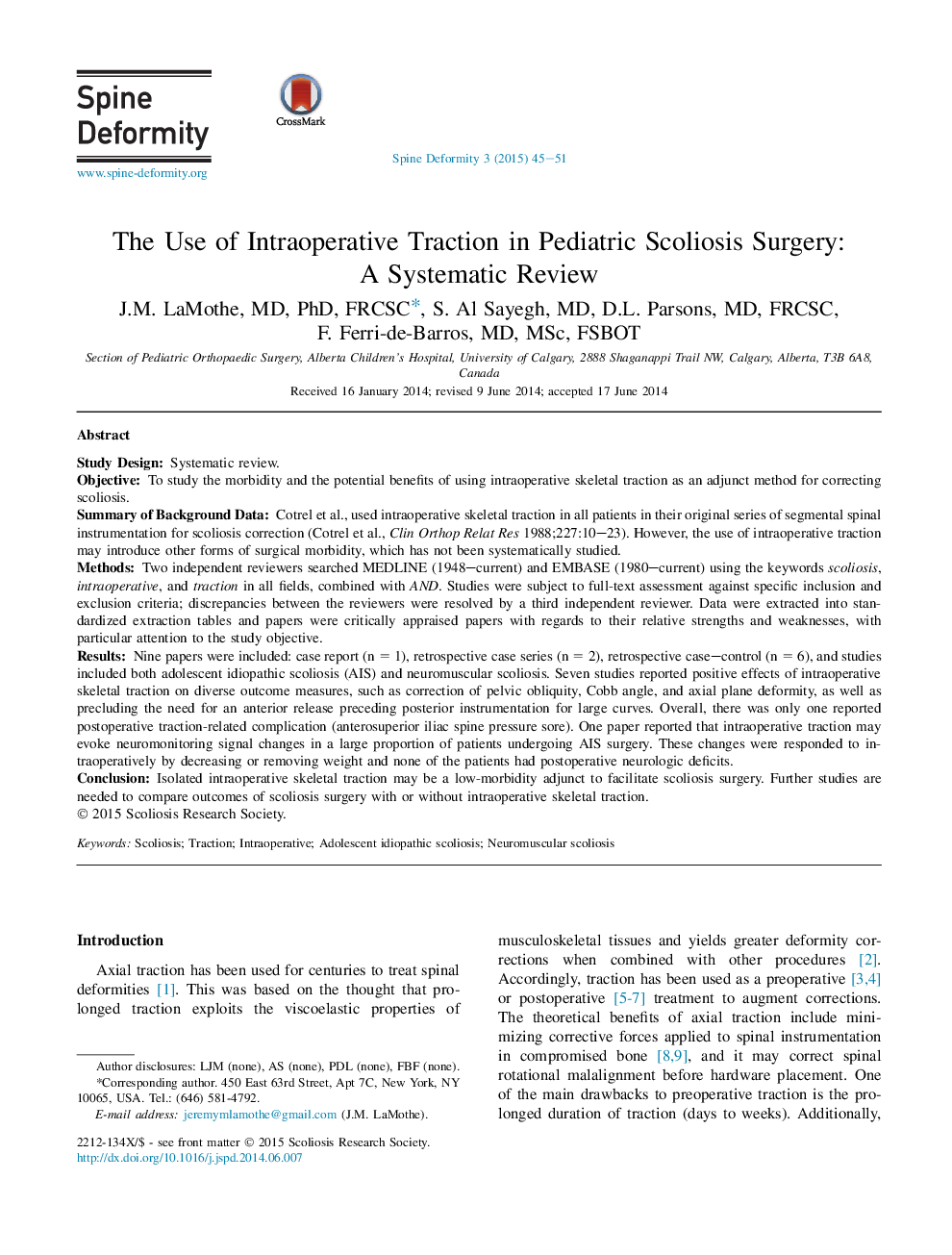| Article ID | Journal | Published Year | Pages | File Type |
|---|---|---|---|---|
| 4095233 | Spine Deformity | 2015 | 7 Pages |
Study DesignSystematic review.ObjectiveTo study the morbidity and the potential benefits of using intraoperative skeletal traction as an adjunct method for correcting scoliosis.Summary of Background DataCotrel et al., used intraoperative skeletal traction in all patients in their original series of segmental spinal instrumentation for scoliosis correction (Cotrel et al., Clin Orthop Relat Res 1988;227:10–23). However, the use of intraoperative traction may introduce other forms of surgical morbidity, which has not been systematically studied.MethodsTwo independent reviewers searched MEDLINE (1948–current) and EMBASE (1980–current) using the keywords scoliosis, intraoperative, and traction in all fields, combined with AND. Studies were subject to full-text assessment against specific inclusion and exclusion criteria; discrepancies between the reviewers were resolved by a third independent reviewer. Data were extracted into standardized extraction tables and papers were critically appraised papers with regards to their relative strengths and weaknesses, with particular attention to the study objective.ResultsNine papers were included: case report (n = 1), retrospective case series (n = 2), retrospective case–control (n = 6), and studies included both adolescent idiopathic scoliosis (AIS) and neuromuscular scoliosis. Seven studies reported positive effects of intraoperative skeletal traction on diverse outcome measures, such as correction of pelvic obliquity, Cobb angle, and axial plane deformity, as well as precluding the need for an anterior release preceding posterior instrumentation for large curves. Overall, there was only one reported postoperative traction-related complication (anterosuperior iliac spine pressure sore). One paper reported that intraoperative traction may evoke neuromonitoring signal changes in a large proportion of patients undergoing AIS surgery. These changes were responded to intraoperatively by decreasing or removing weight and none of the patients had postoperative neurologic deficits.ConclusionIsolated intraoperative skeletal traction may be a low-morbidity adjunct to facilitate scoliosis surgery. Further studies are needed to compare outcomes of scoliosis surgery with or without intraoperative skeletal traction.
